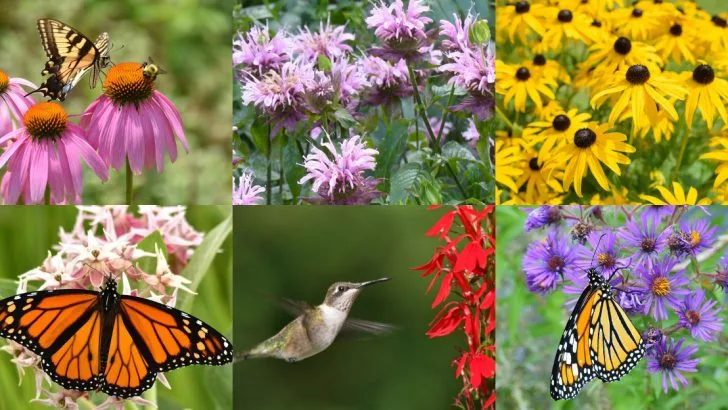Some of the best plants you’ll ever grow are the ones you’ve been ignoring. While everyone’s chasing the latest tropical stunners or fussy imports, native plants are quietly outshining them—stronger, smarter, and flat-out better looking. They don’t need babysitting. They don’t throw tantrums when the weather changes. They just grow—beautifully, boldly, and with far less drama. These aren’t second-rate substitutes. They’re the unsung heroes of thriving, low-stress gardens. And once you plant them? You might start wondering why you ever gave space to that temperamental diva of a shrub that barely bloomed and constantly pouted. Ready to meet the homegrown stars that outwork the hype? Let’s go.
Purple Coneflower
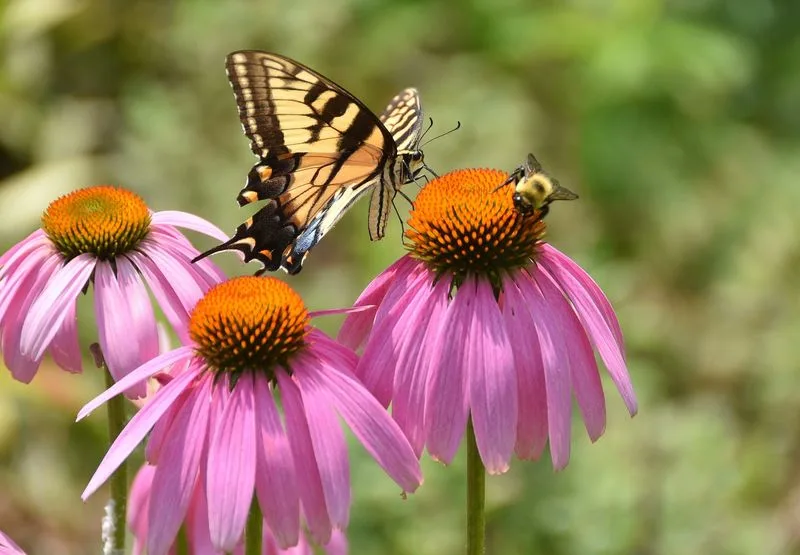
The Purple Coneflower stands tall and proud in any garden with its vibrant purple petals and distinctive spiky center. Native to North America, this perennial is not just a visual delight but also a haven for pollinators. Bees and butterflies are drawn to its nectar, making it a vital part of the ecosystem.
Unlike many exotic plants, Purple Coneflowers are drought-tolerant and require minimal maintenance. They adapt well to various soil types, ensuring their robust presence in gardens. Their strong, tall stems make them resistant to wind damage, adding durability to their list of virtues.
Wild Bergamot
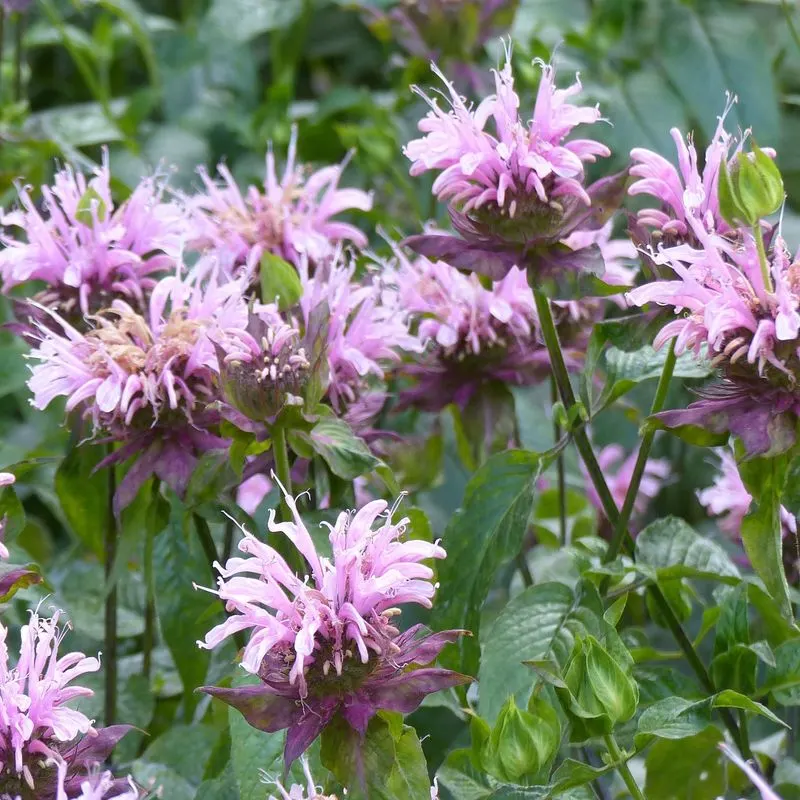
With a scent reminiscent of Earl Grey tea, Wild Bergamot is a fragrant native that attracts hummingbirds and bees alike. Its lavender blooms create a spectacle in any natural garden setting. Known for its medicinal properties, it has been used traditionally for its soothing benefits.
Wild Bergamot thrives in open fields and sunny environments. Its aromatic leaves can be steeped into herbal teas, providing a dual-purpose plant that blends beauty with utility. Hardy and resilient, it withstands harsh weather conditions, ensuring it remains a staple in native plant landscapes.
Black-eyed Susan
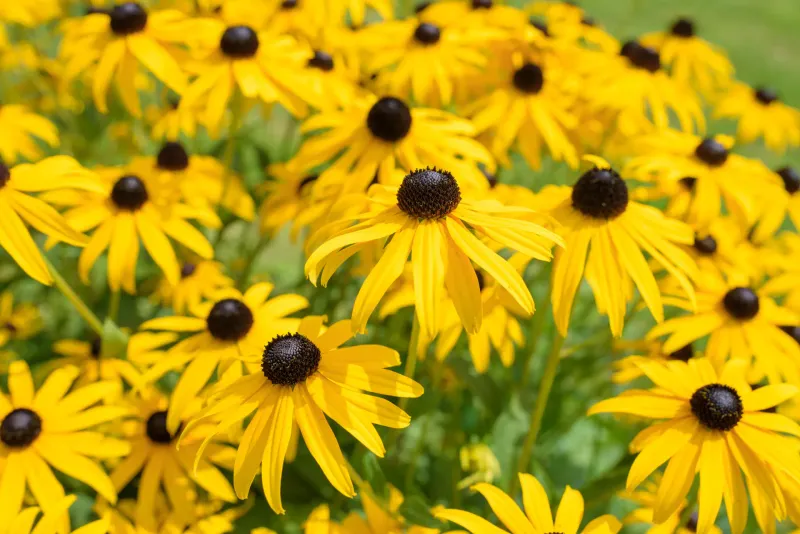
Black-eyed Susans bring a splash of sunshine with their bright yellow petals and contrasting dark centers. These cheerful plants are native to North America and are known for their long blooming period. They add radiant color to any summer landscape.
Beyond their aesthetic appeal, Black-eyed Susans are drought-resistant and flourish in various soil types. Their adaptability makes them an excellent choice for gardeners seeking low-maintenance beauty. They also play a vital role in supporting native fauna, attracting beneficial insects and providing habitat.
Buttonbush
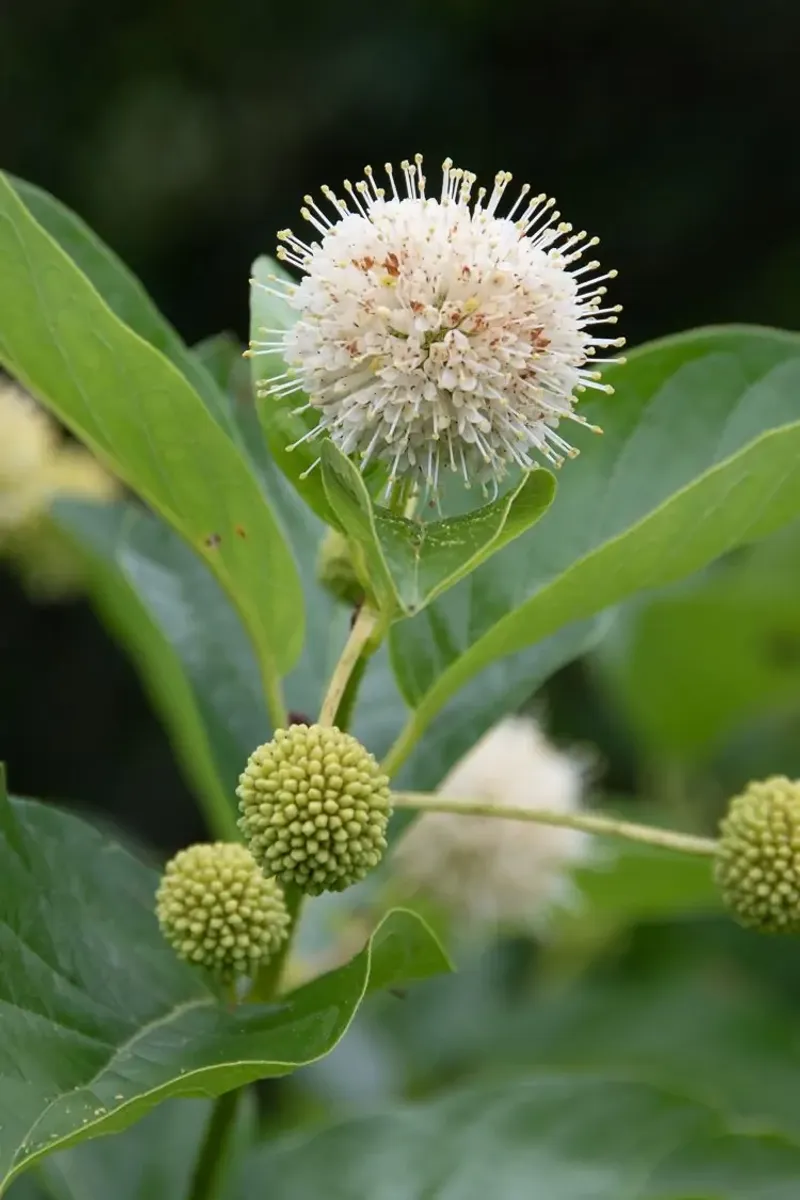
Buttonbush, with its intriguing globe-shaped flower clusters, adds an exotic touch despite being a native species. Found near water bodies, these plants thrive in wet and marshy areas. Their white flowers attract a myriad of pollinators, including butterflies and bees.
Buttonbush is not only a visual delight but also serves as a critical habitat for wildlife. Its growth along riverbanks and ponds helps stabilize soil, preventing erosion. The plant’s adaptability to waterlogged conditions makes it a perfect addition to rain gardens and wetlands.
New England Aster

New England Asters are showstoppers with their vivid purple blooms and sunny yellow centers. As fall approaches, these asters become a vital food source for late-season pollinators. Their striking color provides a perfect contrast to autumn’s golden hues.
These perennials thrive in full sun and moist, well-drained soils. They are resistant to many common plant diseases, ensuring their longevity. New England Asters are excellent for borders and wildflower gardens, where they bring a burst of color and support ecological diversity.
Cardinal Flower
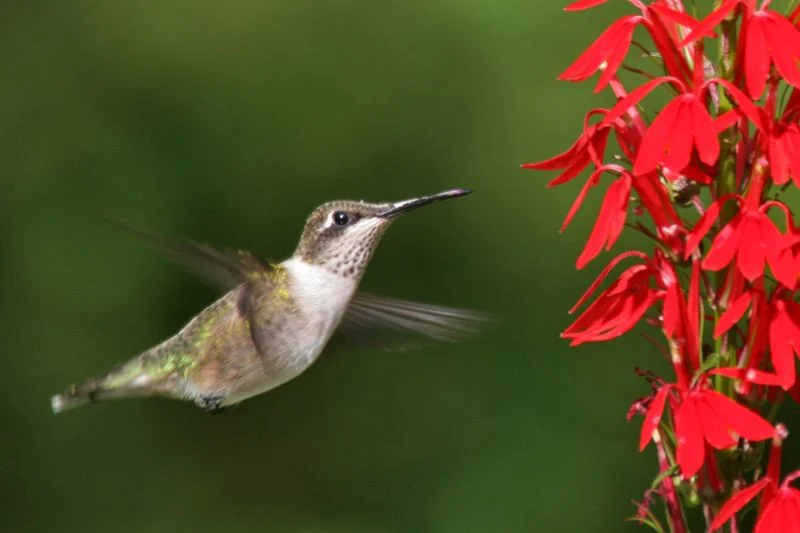
The Cardinal Flower’s brilliant red blooms are irresistible to hummingbirds, making it a dynamic addition to any garden. These vivid spikes of color emerge in mid-summer, providing a striking display against green backgrounds.
Preferring moist, rich soils, Cardinal Flowers often inhabit stream banks and wetlands. Their natural habitat makes them ideal for rain gardens and water features. Despite their delicate appearance, these perennials are hardy and stand resilient against various environmental stresses, offering a reliable and beautiful garden fixture.
Virginia Bluebells
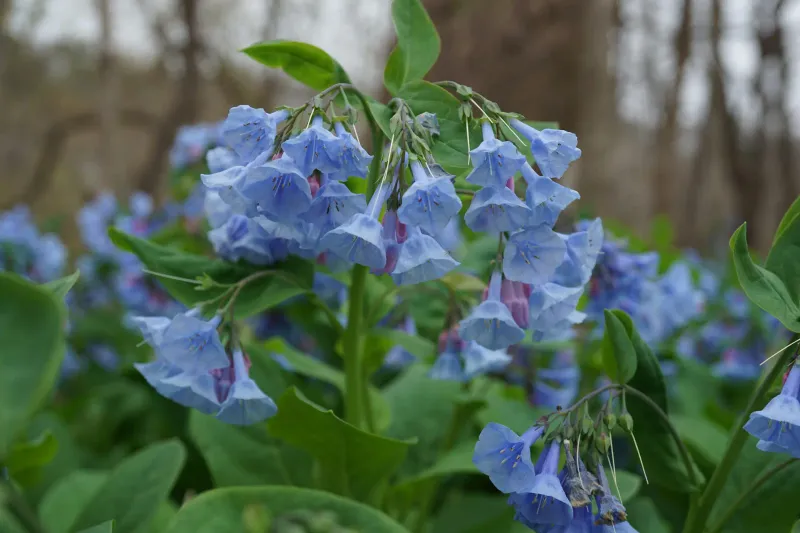
Virginia Bluebells offer a gentle cascade of nodding, bell-shaped flowers in the spring. Their soft blue hues create a serene woodland tapestry, enchanting visitors with their ephemeral beauty.
These native perennials prefer shaded, moist environments, making them perfect for woodland gardens. Virginia Bluebells are among the first to bloom, signaling the arrival of spring. As they thrive in their natural habitats, they require little care, which makes them an effortless choice for gardeners seeking simplicity and elegance.
Wild Columbine

Wild Columbine enchants with its drooping, lantern-shaped flowers in red and yellow. These native perennials are a favorite among gardeners for their unique appearance and adaptability.
Growing well in rocky and wooded areas, Wild Columbine adds a splash of color to less hospitable terrains. Their nectar-rich blooms attract pollinators, such as bumblebees and hummingbirds, encouraging biodiversity. With minimal maintenance needs, they are perfect for those seeking to cultivate a naturalized garden environment.
Showy Milkweed

Showy Milkweed is a beacon for monarch butterflies, with its clusters of pink, fragrant flowers. As a native species, it’s crucial for supporting butterfly populations, providing essential food and breeding grounds.
Found in open fields and ditches, Showy Milkweed thrives in sunny, well-drained soils. Its robust nature ensures it can withstand drought conditions. Not only does it offer ecological benefits, but its striking appearance adds vertical interest to garden landscapes, making it both functional and decorative.
Prairie Blazing Star
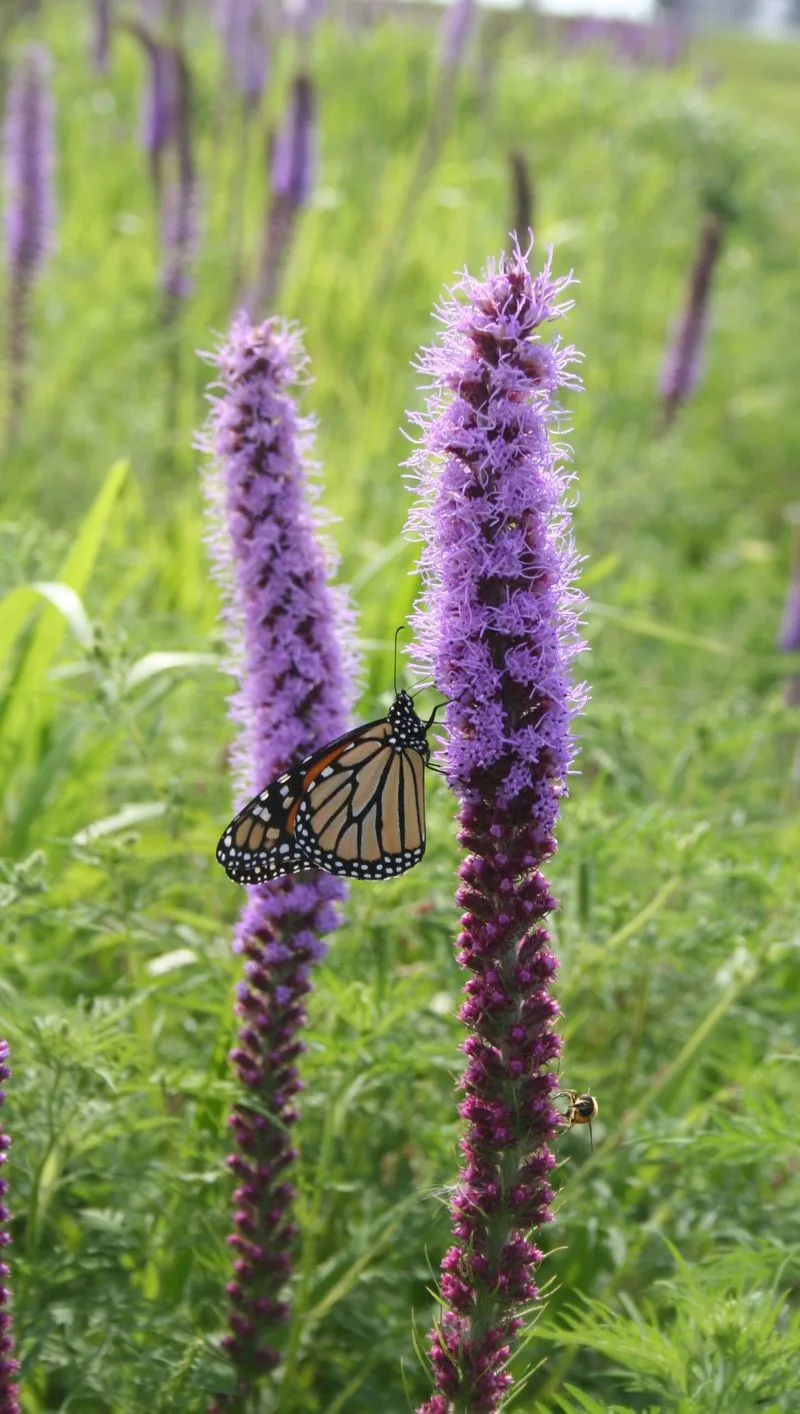
Prairie Blazing Star captivates with its tall spikes adorned with bright purple flowers. These native perennials bring a vertical dimension to the garden, attracting butterflies and bees.
Growing best in full sun and well-drained soils, Prairie Blazing Star is a resilient choice for prairie-style plantings. Its ability to withstand drought and poor soil conditions makes it an excellent option for sustainable gardening. The vibrant blooms add a touch of drama, transforming ordinary spaces into dynamic scenes.
Great Blue Lobelia
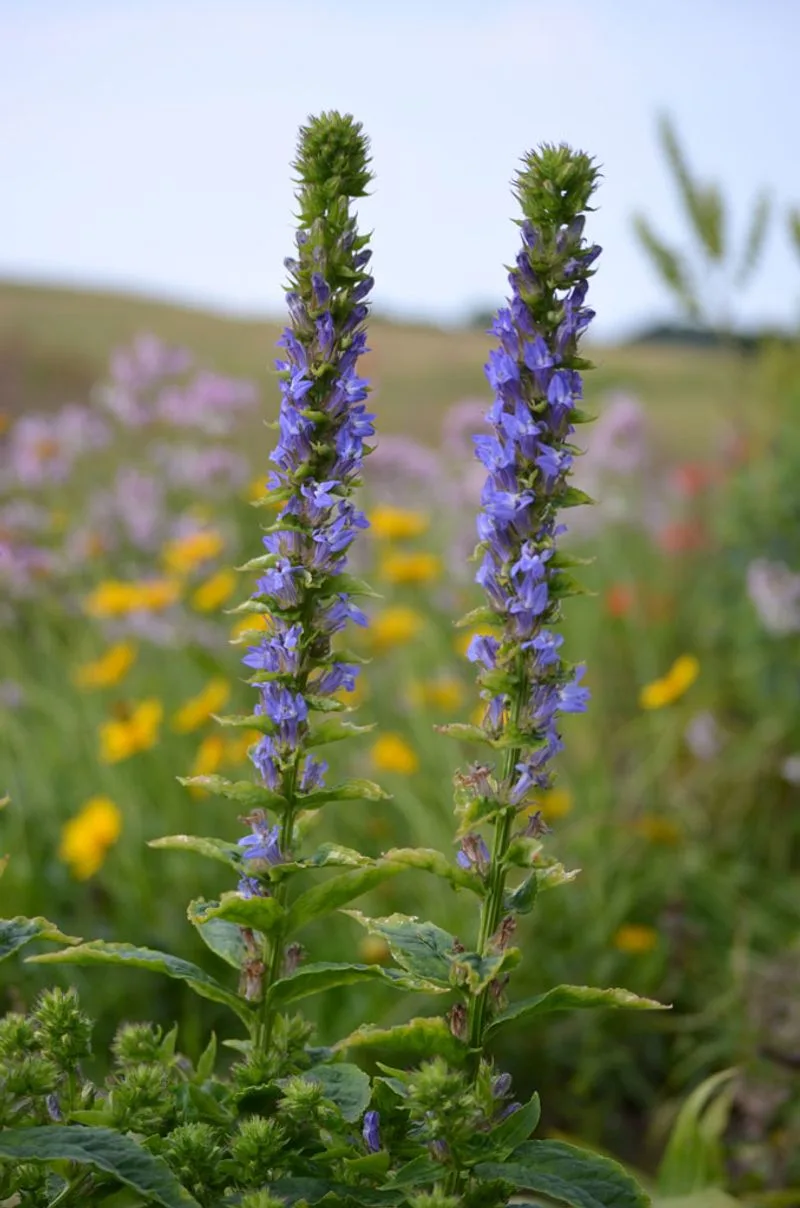
The Great Blue Lobelia’s rich blue flowers provide a cool contrast to warm summer tones. These natives prefer moist soils and partial shade, often found near streams and wet meadows.
Their long-lasting blooms make them a favorite for gardeners looking to extend the flowering season. Beyond their beauty, Great Blue Lobelias are reliable in their growth, requiring minimal care once established. Their presence enhances local ecosystems, offering food and shelter to various pollinators and wildlife.
Switchgrass
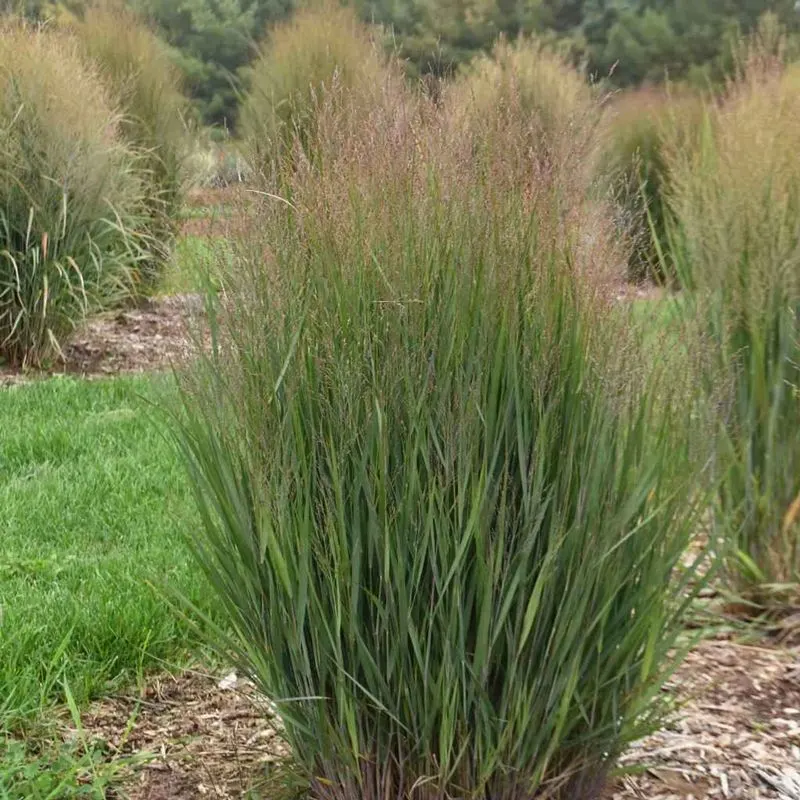
Switchgrass is not just a grass; it’s a testament to the beauty of native prairie landscapes. With its tall, airy plumes, it adds movement and texture to gardens. As a warm-season grass, it thrives in full sun and is remarkably drought-tolerant.
Switchgrass is perfect for erosion control, with deep roots that stabilize soil. This makes it an excellent choice for sustainable landscaping. Its golden hues in autumn offer seasonal interest, ensuring that gardens remain vibrant even as temperatures drop.
Cup Plant

The Cup Plant’s towering presence is marked by its unique foliage. Its large leaves join at the stem, forming natural cups that collect rainwater. This feature not only aids the plant but provides water for birds and insects.
Native to prairies, Cup Plants thrive in moist, fertile soils. They are champions of biodiversity, supporting a wide array of wildlife. Their bright yellow flowers attract pollinators, making them an essential addition for ecological gardens. Their adaptability and ecological contributions make them invaluable.
Joe Pye Weed

Joe Pye Weed, with its towering dusty pink blooms, beckons butterflies from afar. These native beauties thrive in moist, rich soils and sunny spots, creating a floral spectacle both in the wild and in cultivated spaces.
Besides its visual appeal, Joe Pye Weed has historical significance as a medicinal plant. Its height and flower clusters add vertical interest and texture, making it a favorite among native plant enthusiasts. Its easy-going nature allows it to flourish with little care, offering gardeners a low-maintenance option.
Goldenrod
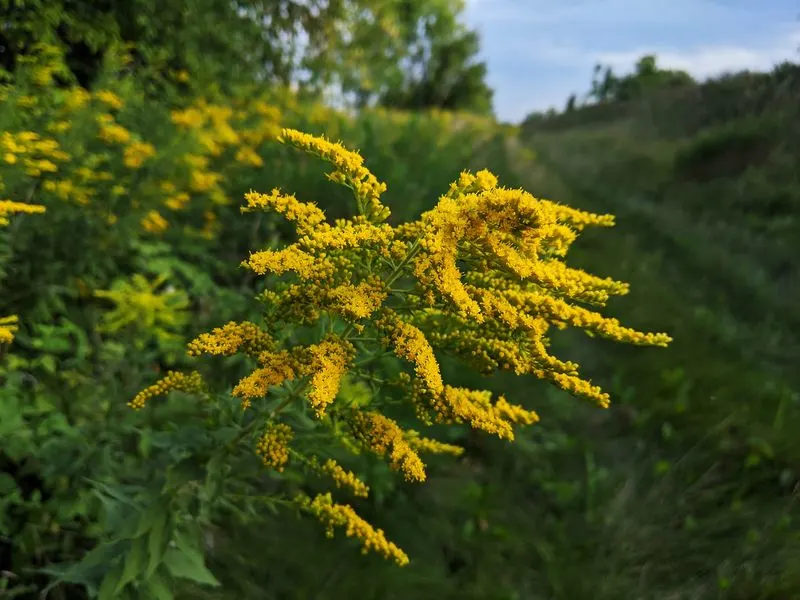
Goldenrod bursts onto the scene with exuberant yellow flowers that brighten late summer landscapes. Often misunderstood as a cause of allergies, these natives actually play a crucial role in supporting pollinators as they prepare for migration.
Goldenrod adapts well to various soil types and conditions, making it a versatile garden choice. Its robust nature allows it to thrive with little care, providing a beautiful and functional addition to native plantings. Its historical use in herbal remedies adds yet another layer to its charm.
Yarrow
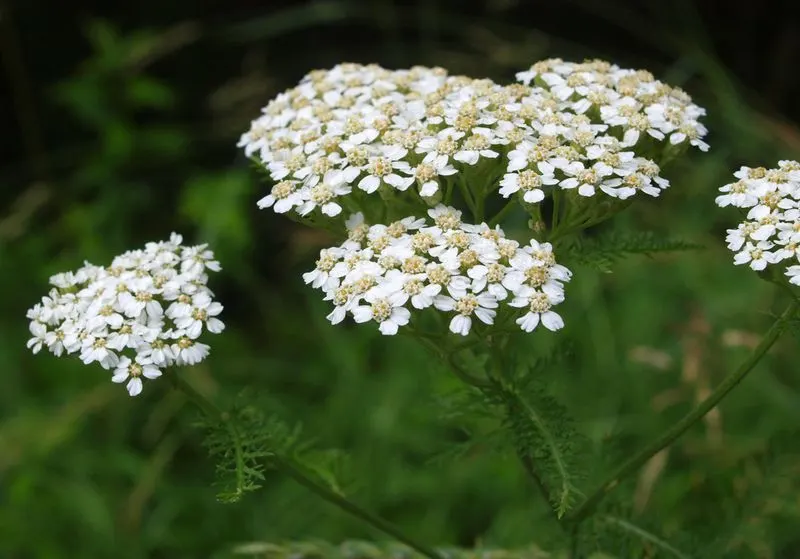
Yarrow, with its finely divided leaves and clusters of white flowers, is both ornamental and functional. These native perennials are known for their medicinal properties and were historically used for wound healing.
Growing in sunny and dry conditions, Yarrow is incredibly hardy and drought-resistant. Its presence in the garden helps improve soil quality and provides a habitat for beneficial insects. Its delicate foliage adds a soft texture, complementing bolder plants and creating a balanced garden aesthetic.
Wild Ginger
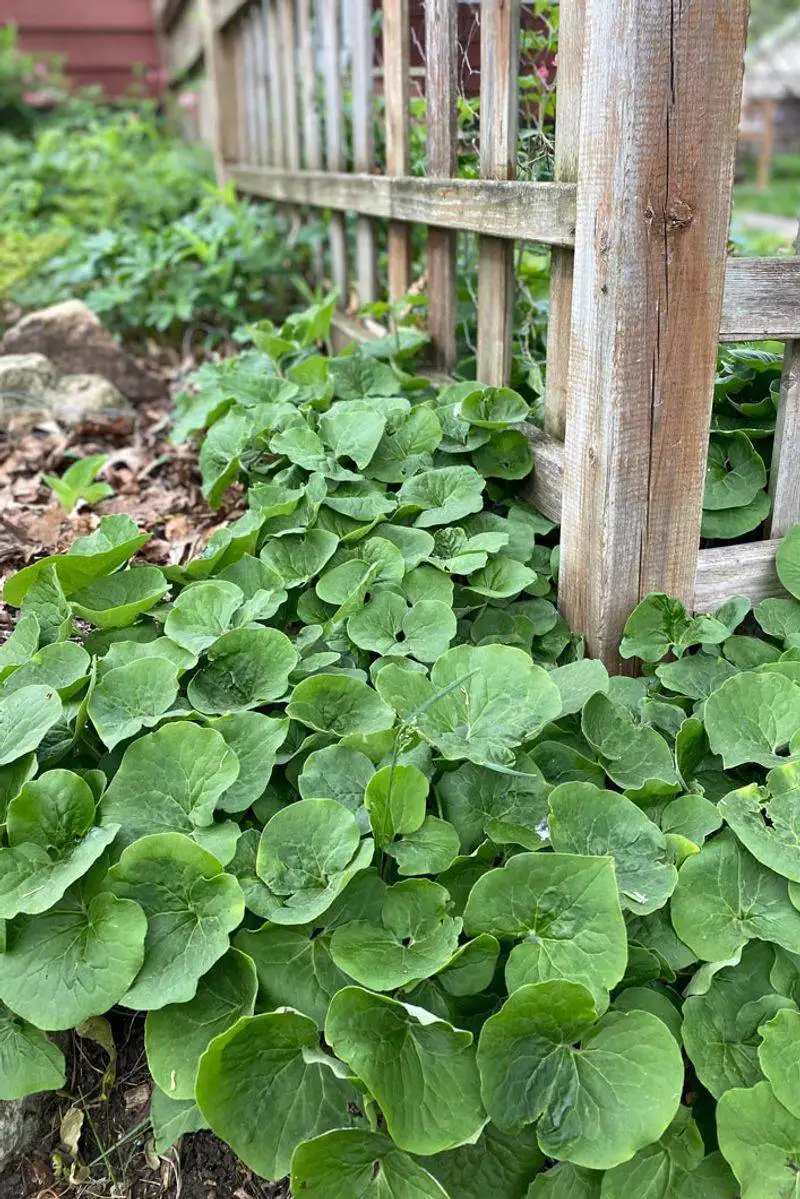
Wild Ginger’s heart-shaped leaves create a lush ground cover in shaded gardens. Its understated appearance belies its ecological importance, providing food for forest floor fauna.
Thriving in moist, well-drained soils, Wild Ginger is perfect for woodland gardens. While its flowers are hidden, they offer a unique peek for those who seek them out. Despite their delicate look, these plants are robust and spread easily, offering ground cover that suppresses weeds and enriches the soil.
Indian Grass
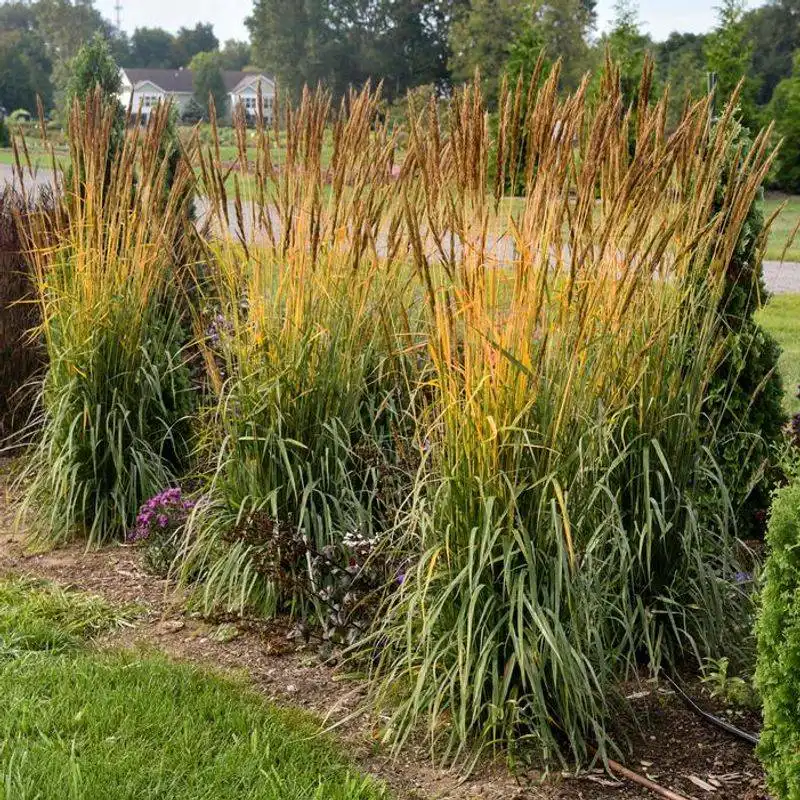
Indian Grass, with its golden flower spikes, captures the essence of the American prairie. This native grass is a powerhouse for wildlife, providing shelter and sustenance for a variety of species.
Thriving in full sun and well-drained soils, Indian Grass is drought-tolerant and low-maintenance. Its tall stature and graceful plumes create movement and interest in native plantings. As autumn approaches, its foliage takes on warm hues, adding seasonal beauty to landscapes.
Wild Lupine
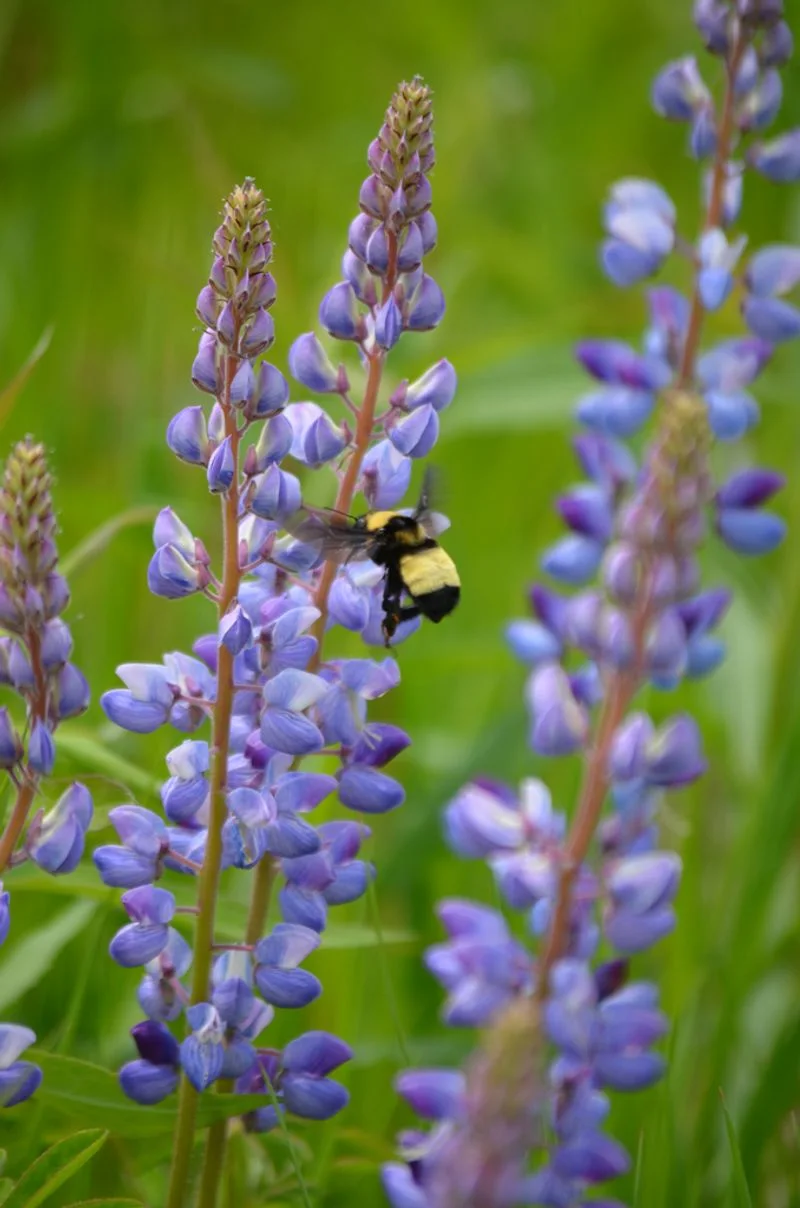
Wild Lupine’s tall, elegant spikes of blue flowers are a magnet for bees and butterflies. These perennials thrive in sandy soils and sunny locations, making them a perfect choice for challenging areas.
Beyond their beauty, Wild Lupines play an integral role in supporting endangered species such as the Karner blue butterfly. Their nitrogen-fixing ability improves soil fertility, benefiting adjacent plants. They are both a visual and ecological asset to any native garden.
Blue Flag Iris
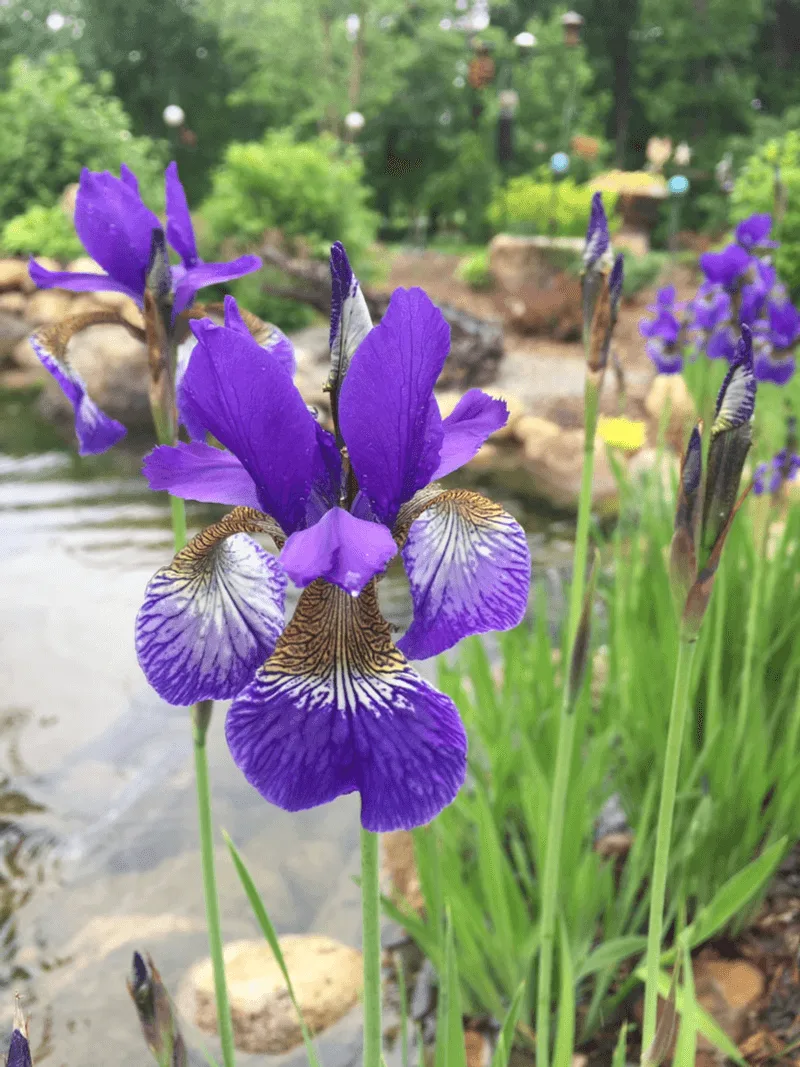
The Blue Flag Iris adds a touch of elegance with its striking blue flowers and sword-like leaves. These natives prefer wetland conditions, thriving along pond edges and marshes.
Their blooms are short-lived but make a significant impact with their vivid hues. Blue Flag Irises are not only beautiful but also essential for water purification and erosion control. Their presence supports diverse aquatic life, making them a valuable component of wetland gardens.
American Beautyberry
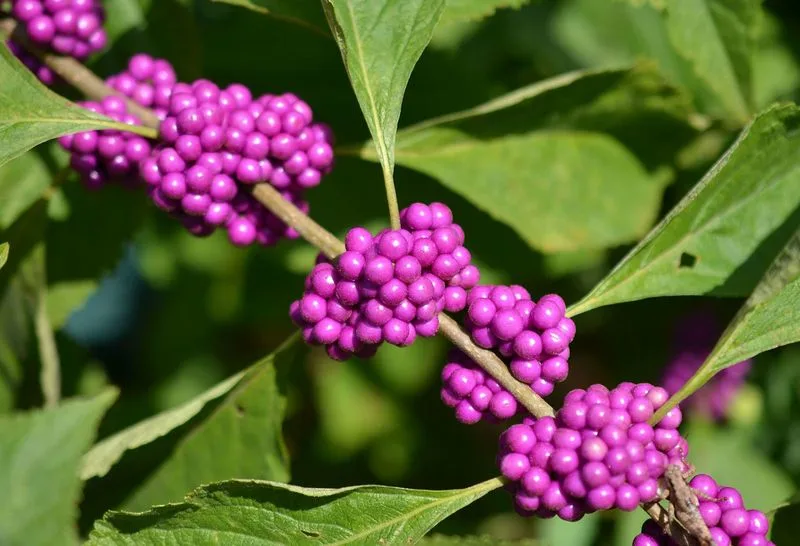
The American Beautyberry lives up to its name with striking clusters of purple berries that attract birds and delight the eye. These shrubs are adaptable, growing in a variety of soil types and conditions.
In addition to their beauty, Beautyberries have practical uses; their berries can be used in jellies, and the leaves are known for insect-repelling properties. This plant is a wonderful choice for gardeners looking to combine ornamental and functional gardening.
Spotted Joe Pye Weed
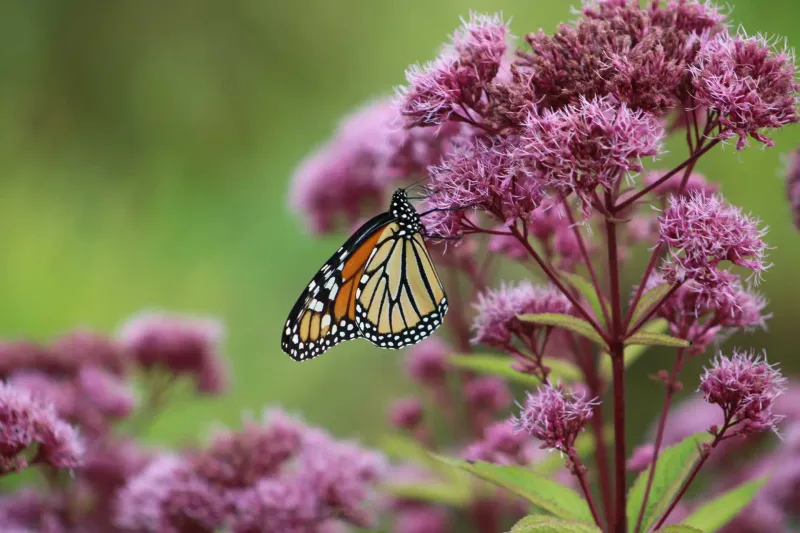
Spotted Joe Pye Weed offers clusters of pink flowers that stand tall, captivating the attention of butterflies and other pollinators. This native plant is a staple in wet meadow environments, thriving in full sun and moist soils.
Besides its attractiveness, Spotted Joe Pye Weed has traditional uses in herbal medicine. Its vertical growth adds structure and height to garden designs, making it a versatile choice for various landscapes. With minimal care requirements, it’s an appealing option for nature-inspired gardens.

